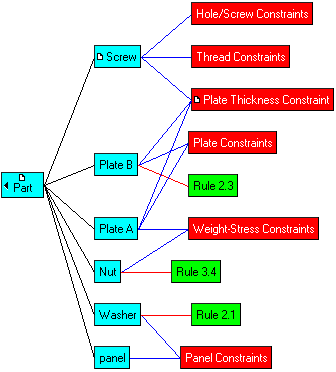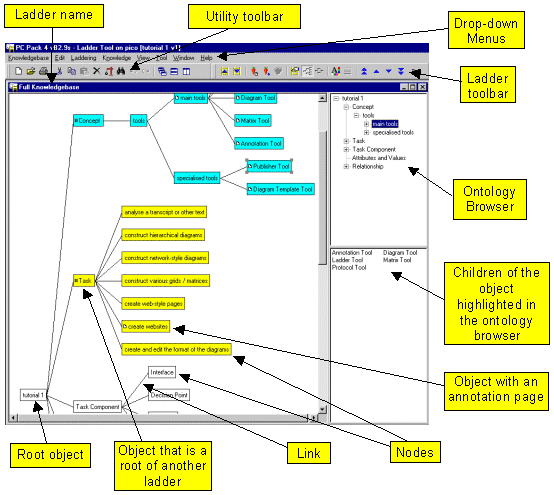PCPACK6 Ladder Tool
|
The Ladder Tool enables the user to build various hierarchies of knowledge. These hierarchical (tree-like) diagrams are referred to as ladders (a term taken from knowledge engineering). PCPACK allows any type of ladder to be constructed, such as a concept ladder, attribute ladder, process ladder and decision ladder (see Knowledge Models for descriptions of these). The ladders produced can include any number of relations.
Knowledge objects marked-up in the Protocol Tool are automatically displayed in the
appropriate ladder and are easily moved around and re-named to create the ladder structures.
New objects can be added using the Ladder Tool, either as a higher-level object
(using the Basic Features
Example Ladder An example of part of a ladder produced using the Ladder Tool is shown below. Colours have been used to distinguish different types of objects and different types of relations.
User Interface The user interface of the Ladder Tool is explained in the following figure.
|
Other PCPACK tools:
Protocol Tool
Diagram Tool
Matrix Tool
Annotation Tool
Admin Tool
Publisher Tool
Diagram Template Tool
Equation Editor Tool
Launcher Wizard Tool

